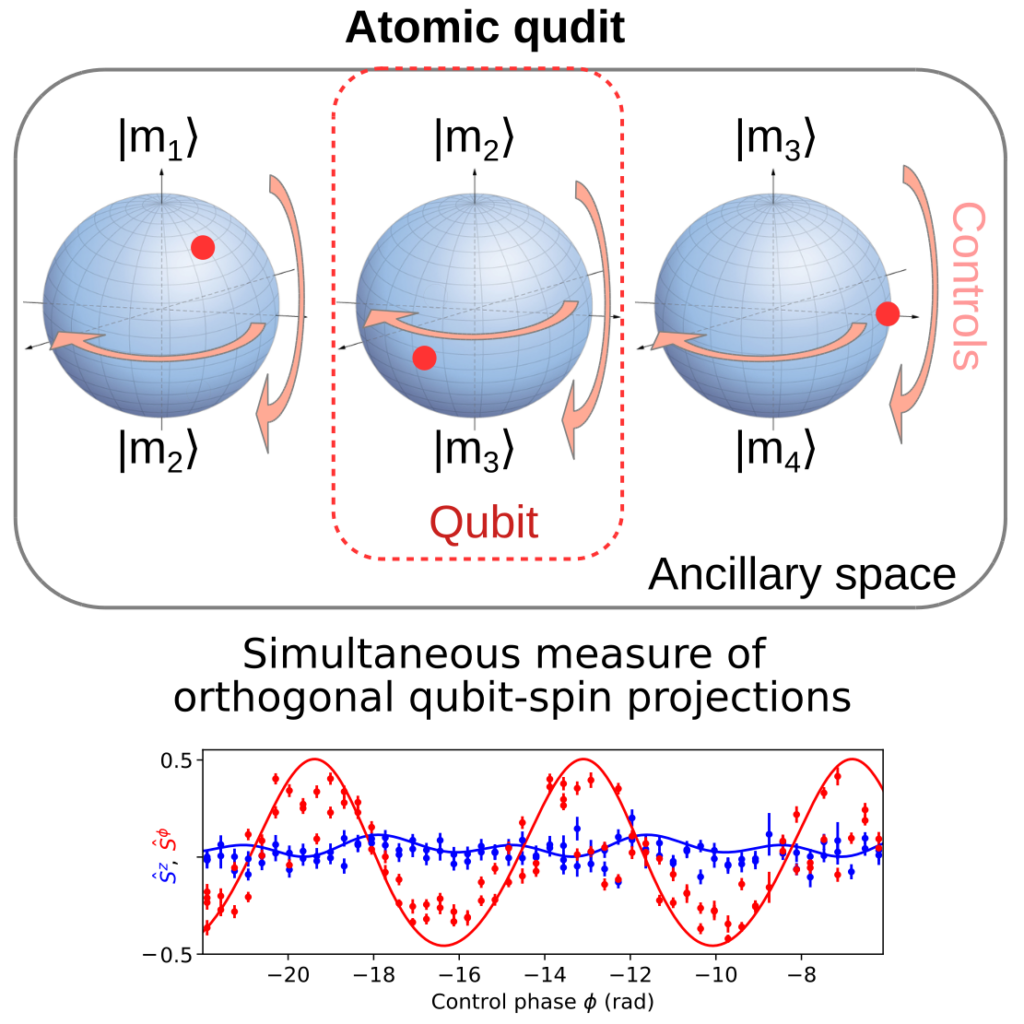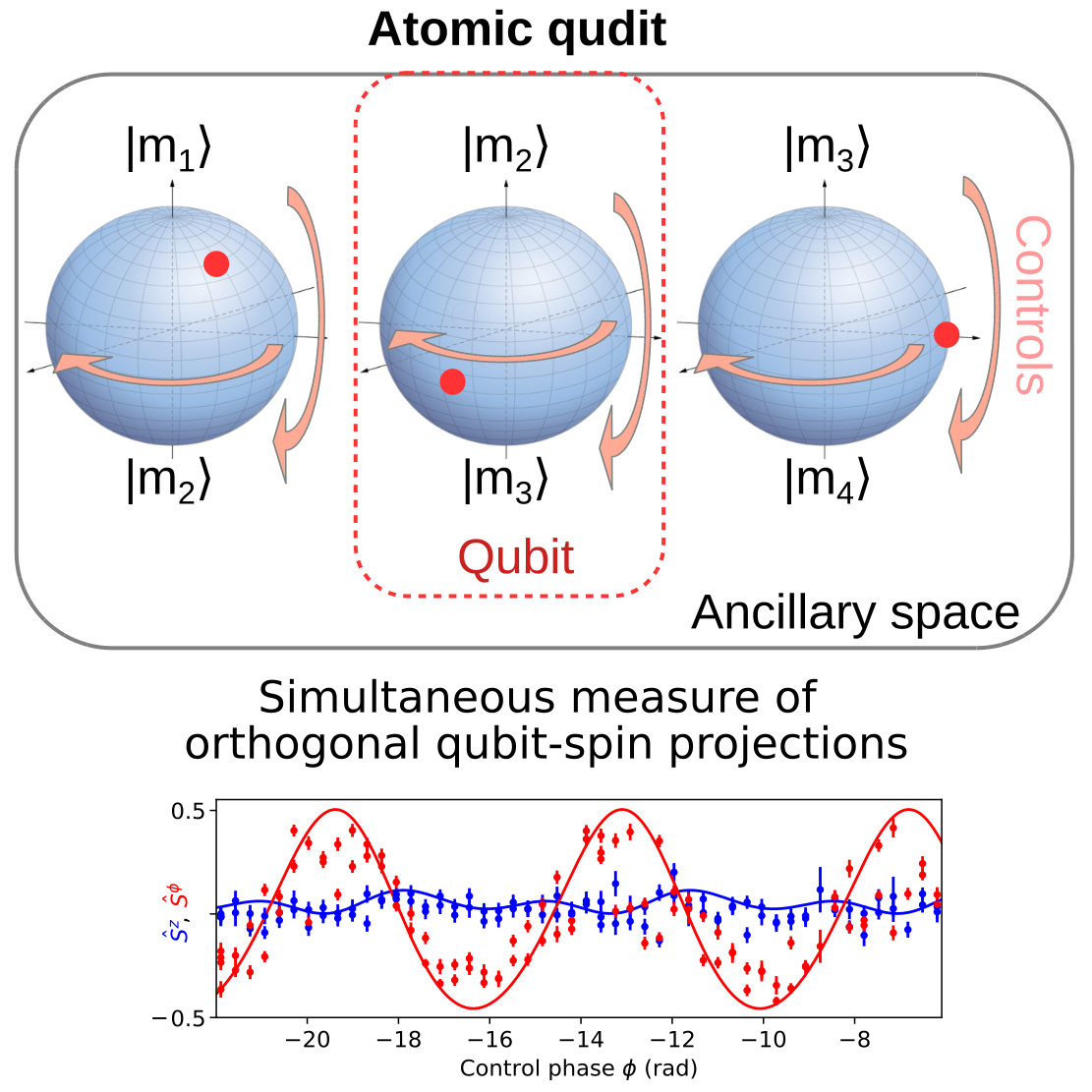Researchers in LPL’s GQM team have developed a new method for controlling the spin of ultra-cold atoms
Researchers in LPL’s GQM team have developed a new method for controlling the spin of ultra-cold atoms, with applications in the fields of quantum information, quantum simulation, and sensors. The method applies to a popular species, strontium, used for example in atomic clocks. By controlling interactions between atoms and lasers, researchers are able to manipulate two specific atomic states coherently, thus achieving operations beyond traditional methods. They have developed Ramsey interferometers that give a high-contrast signal even after three seconds of interrogation. In addition, they use the large spin of atoms to simultaneously measure several physical quantities, such as a laser field and a dc magnetic field, at the position of the atoms; or to simultaneously measure several observables of a quantum state, whose joint measurement would be forbidden by quantum mechanics following traditional measurement schemes. This work can improve quantum measurement techniques and be used to explore complex phenomena of quantum magnetism. These results have been published in the journal PRX Quantum


